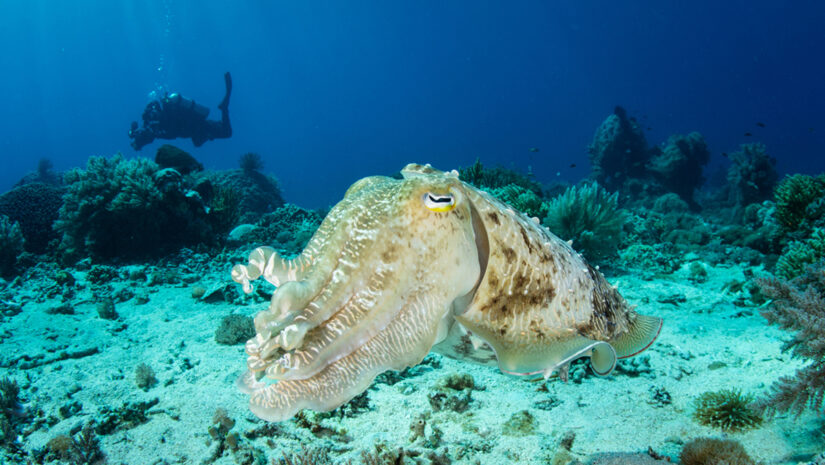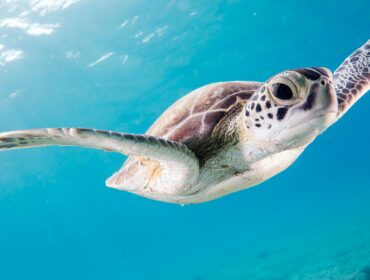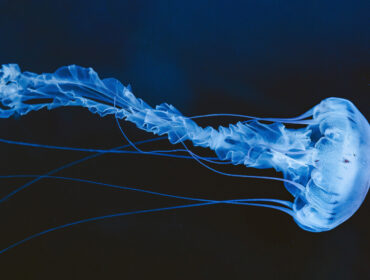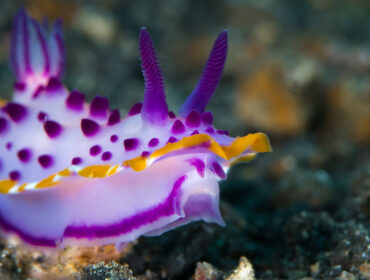Cephalopods are a class of mollusks that are distinguished their bilateral symmetry, large heads, and numerous tentacles. The term comes from a Greek word that means “head-feet.” There are five main types, or subclasses, of these creatures with several unique species under each subclass. But despite this fact, each cephalopod species shares the same characteristics.
What is a cephalopod?
A cephalopod is a fascinating and diverse group of marine animals characterized by their unique features and remarkable intelligence. Belonging to the mollusk family, cephalopods include octopuses, squids, and cuttlefish. These creatures boast a distinct body structure with tentacles or arms surrounding their mouth, hence the name “cephalopod” (meaning “head-foot”). They possess highly developed nervous systems and complex sensory organs, enabling them to adapt to their environment with astonishing agility.
Cephalopods are renowned for their camouflaging abilities, intricate problem-solving skills, and ability to change colors and patterns. Their intriguing characteristics make them captivating subjects for scientific study and sources of endless fascination for nature enthusiasts.
Let’s take a look at 10 examples of cephalopods that you can find throughout the world’s oceans.
10 Cephalopod Types Living in Oceans Worldwide
- Octopus
- Squid
- Nautilus
- Cuttlefish
- Vampire Squid
- Flamboyant Cuttlefish
- Telescope Octopus
- Piglet Squid
- Giant Pacific Octopus
- Paper Nautilus
Octopus

Aside from being one of the most recognizable cephalopods, the octopus is also one of the ocean’s most intelligent creatures. They have bulbous heads and eight arms, and vary greatly in size and weight. They can measure anywhere from a few inches to several feet and can weigh hundreds of pounds.
Besides multiple arms, these class Cephalopoda examples have three hearts and blue blood. They can also fend off predators by squirting ink. You can find octopuses all over the world’s oceans.
Squid

Squids are also popular cephalopods. Like octopuses, these creatures have eight arms that are relatively short compared to their large heads. They boast two long tentacles, too. But what makes squids distinct from their fellow cephalopods?
Some of their unique characteristics and abilities include backward swimming, which involves pushing water out from their bag-like bodies. Squids can also change their color and swim faster than any other invertebrates. Scientists deem most of them to be highly intelligent; they can even hunt or catch food with fellow squids on certain occasions.
Nautilus

While the Nautilus isn’t nearly as famous as the octopus and squid, it is just as remarkable. This species boasts a beak, eyes, and up to 90 tentacles that protrude from a large, round central shell. The shells on young nautiluses typically have four chambers at birth, which expand as they grow.
Nautiluses are the Nautilaceae superfamily’s only living descendants, which is why some scientists consider them to be “living fossils.” Their lifespan can reach up to 20 years or more. Nautiluses live in the Indian and Pacific oceans, and can be found in the coastlines of Fiji, Japan, Australia, and New Caledonia, among other locations.
Cuttlefish

Belonging to the same subclass as squids and octopuses, cuttlefishes have eight short arms and two tentacles. Most of these creatures also boast the ability to change colors or skin texture instantly. They can show bright, flickering patterns of color across their bodies on certain occasions. Cuttlefishes come with more camouflage as they can mimic coral and seaweed shape and texture.
Cuttlefish species actively hunt for mollusks, fishes, crabs, and sometimes even other cuttlefishes. They can also create clouds with sepia ink when they’re under threat. These clouds make predators confused and let cuttlefishes escape. They usually live for one to two years on average.
Vampire Squid
The next cephalopod example on our list is a fascinating species: It’s neither a squid nor octopus, even if it looks like both creatures. This cephalopod features long and filamentous tentacles with sticky cells that help it get food particles. Vampire squids also run away from predators by ejecting a colorless substance. The substance has many bioluminescent particles that leave predators confused.
Aside from producing light while under threat, the vampire squid can also communicate with other vampire squids by producing light at the ends of their arms. It resides in the ocean’s “midnight zone”, which refers to very deep areas where sunlight can’t pass through the water column.
Flamboyant Cuttlefish

Known as the close relatives of squids, octopuses, and nautiluses, flamboyant cuttlefishes are much smaller than other cuttlefish species at nearly eight centimeters. They live and hover near ocean bottoms thanks to their flat bodies. These cephalopods also have a cuttlebone, a porous internal shell that used to be their outer shell. It boasts holes with gas and liquid, which vary when flamboyant cuttlefish change their buoyancy.
Flamboyant cuttlefishes show off vivid shades of yellow, maroon, brown, and white across their bodies, too. This feature is evident at their birth, with stunning dark markings complementing their bright pink tentacles. Their unique coloration comes in handy when they encounter predators underwater.
Telescope Octopus
This species of octopus features tubular eyeballs. Similar to the ones on chameleons, the eyeballs of the telescope octopus rotate on their own. They even allow it to see much better than other cephalopods with their intricate structure. It’s also worth noting that telescope octopuses live like squids, which might explain why their eyes boast the aforementioned abilities.
Piglet Squid
Part of the genus Heliotranchia, the piglet squid is small (it’s just a few centimeters long) and is one of the cutest sea creatures. It lives at depths of over 100 meters in nearly all oceans. Water always fills this squid’s body, causing it to swim slowly. But despite its sluggish speed, the fluid inside the species has ammonium ions to help it stay buoyant.
Piglet squids have other unique characteristics. They feature large eyes with large photophores underneath them and nearly transparent bodies. The species can also turn purple during labor, though why they do so is a complete mystery.
Giant Pacific Octopus

The giant Pacific octopus surely lives up to its name: It’s the world’s largest octopus species with its weight and length averaging 110 pounds and 16 feet, respectively. It usually has a reddish-pink hue, but it also boasts chromatophores under its skin’s surface. Thanks to these special pigment cells, the giant Pacific octopus can change its color and blend in with rocks and corals.
This species is one of the longest living octopuses, with an average lifespan of four to five years. It’s highly intelligent, too: researchers have seen the creature open jars and imitate other species underwater. The Pacific Ocean’s northern coast, which spans the United States up to Alaska, is home to the giant Pacific octopus. You can find them swimming around Japanese waters as well.
Paper Nautilus

While its common name bears the word “nautilus”, the last cephalopod on our list is actually an octopus. The paper nautilus (or argonaut) has a thin and papery shell that females produce after mating, hence its name. Females lay their eggs and squeeze themselves into this shell.
Aside from storing eggs, argonaut shells also serve as ballast tanks. The species seals the air it breathes from the water’s surface into its shell. Once they’re done sealing air, they’ll dive down until the air bubble’s weight neutralizes. This process allows argonauts to bob with less energy, helping them stay in place underwater.
People often spot paper nautiluses close to the surface of tropical and subtropical seas. These creatures consume plankton in these areas.
Cephalopod Frequently Asked Questions
Cephalopod literally means “head-foot,” derived from the Greek words “kephalē” (head) and “pous” (foot), referring to the distinctive body structure of these fascinating marine creatures, with their arms or tentacles surrounding their mouth region.
An animal is classified as a cephalopod if it possesses certain characteristics. These include a soft body, a distinct head with tentacles or arms surrounding the mouth, a well-developed nervous system, complex sensory organs, and belonging to the mollusk family. Examples include octopuses, squids, and cuttlefish.
Conclusion
Cephalopods are an extraordinary and enigmatic group of creatures that continue to astound scientists and captivate our imaginations. As we uncover more about these mysterious beings, we gain a deeper appreciation for the wonders of the natural world and the incredible diversity of life that exists beneath the waves.





